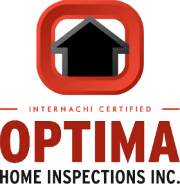Homeownership is a big step, and ensuring your future home is safe and sound is crucial. One aspect that often goes under the radar is radon testing, especially in areas like Poughkeepsie where this gas can pose a significant risk. In this blog, we’ll break down why testing for radon is essential and how it fits into the home inspection process.
What is Radon and Why is it a Concern?
Radon is a naturally occurring radioactive gas that can seep into homes through cracks in the foundation. It is odorless, colorless, and tasteless, making it impossible to detect without proper testing. High levels of radon exposure have been linked to lung cancer, which is why testing is vital. Imagine living with a silent intruder that gradually impacts your health without any immediate symptoms; that’s what radon can be like.
You might be wondering how radon finds its way into your home. This sneaky gas is produced from the natural breakdown of uranium in soil, rock, and water, and it can infiltrate any type of building. Once inside, it gets trapped and accumulates over time. It’s such a pervasive issue that the U.S. Environmental Protection Agency (EPA) has designated radon exposure as a health risk that every homeowner should be aware of. Thus, understanding radon and its entryways into your home can be the first step in addressing the potential hazard.
The Health Risks Associated with Radon Exposure
Understanding the health implications of radon is key. Long-term exposure to high radon levels is the second leading cause of lung cancer after smoking. This is why testing and mitigating radon presence in your home should be a priority. The risk is not immediate but builds over time, which makes it all the more insidious. Notably, children may be more sensitive to radon, given their faster breathing rates and rapidly dividing cells.
Recent studies have strengthened the association between radon exposure and lung cancer, highlighting the urgency of effective radon testing and mitigation strategies. For instance, research from the World Health Organization asserts that radon is a significant contributor to lung cancer cases globally. Therefore, conducting a simple radon test in your home can potentially prevent a grave health risk to all occupants, offering peace of mind that your home is a safe space.
The Radon Testing Process During a Home Inspection
During a home inspection, professionals use specialized equipment to measure radon levels. This process typically involves short-term or long-term testing, depending on the situation. Understanding this process can help you make informed decisions when purchasing a home. Short-term tests usually last between 2 to 90 days, using devices like charcoal canisters, electrets ion detectors, or continuous monitors. These tests provide a snapshot of radon levels and are great for initial assessments.
For more accurate readings, long-term tests that span over 90 days are recommended as they provide a year-round average level of radon presence. Devices like alpha track detectors or continuous radon monitors are commonly used for such assessments. Not only do these tests give a more comprehensive picture, but they also help in understanding how radon levels fluctuate over different seasons. A detailed explanation of this testing process can be found on the National Radon Program Services.
Why Poughkeepsie Homeowners Should Consider Radon Testing
Poughkeepsie, like many areas, can have varying radon levels due to its geological characteristics. Homebuyers should be particularly vigilant in testing for radon to ensure their potential new home is safe from this invisible threat. Given Poughkeepsie’s location, the underlying bedrock can release varying amounts of radon gas, influenced by weather conditions, seismic activity, and even human interventions like construction. Therefore, homeowners in this area are particularly urged to stay on top of radon testing periodically, especially after any structural changes in the home.
Mitigating High Radon Levels
If tests reveal high radon levels, mitigation steps can be taken to reduce the concentration. These can include improving ventilation and sealing foundation cracks. Professional radon mitigation services can provide effective solutions to safeguard your home. The process typically involves a system known as sub-slab depressurization, where pipes and fans are installed to redirect radon gas outside your home, preventing it from entering living spaces.
Furthermore, increasing the airflow throughout your home by opening windows and installing vents can also help reduce radon levels to some extent. However, these are often supplementary measures that should go hand in hand with primary mitigation techniques. For those looking into permanent solutions, the American Association of Radon Scientists and Technologists (AARST) provides a comprehensive guide on choosing effective radon reduction methods suited to any household scenario.
Ensuring Peace of Mind with Radon Testing
Understanding the importance of radon testing in Poughkeepsie can make a world of difference when buying a home. Taking proactive steps to test and, if necessary, mitigate radon can ensure a safer living environment for you and your loved ones. Remember, peace of mind is invaluable, and radon testing is a small price to pay for a healthier home. For more information on ensuring your home is a safe haven, visit our homepage.


